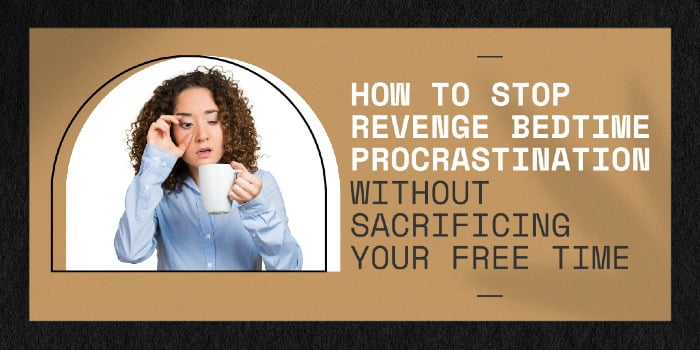How do you know you’re dreaming?
Dreaming is one of the most interesting and magical things our minds can do – all while we’re asleep. But one of the most amazing things about dreams is how you’re not aware of them until you wake up. Hell, it was something that even became the base for the film Inception. Remember the quote:
“Well, dreams, they feel real while we’re in them right? It’s only when we wake up then we realize that something was actually strange”
That’s a pretty good summary right there.
There’s one exception to this, and that’s lucid dreaming. This is where you are aware that you’re dreaming – and have the power to shape and control everything that’s going on.
Find out exactly what causes lucid dreaming and how you can start your own lucid dreams. And, of course, how you can “dream a little bigger, darling”.
What is lucid dreaming?
Lucid dreaming is the ability to know that you’re dreaming while in a dream. But it’s not just the realisation that you’re dreaming – it’s also the capability to completely control your dream.
That means a complete unleashing of your imagination with no limits what so ever.

- Want to ride a fire-breathing dragon over a great purple ocean? You’ve got it.
- Want to explore the depths of space and save the universe from shape-shifting aliens? No problem.
- Want to stroke the softest kittens? Well, you can do this while you’re awake too but I’m not here to judge. It’s your dream. You can do whatever you want with it.
Lucid dreaming happens typically in the REM stage of sleep. This is where your brain is most active, receiving images, sounds and other messages that make up your dreams.
But even though this part of your brain is active, your self-awareness is not. That’s why you don’t realise you’re dreaming until after you’ve woken up – and why most of the details are distant and hard to remember.
In lucid dreaming, the part of your brain that controls your self-awareness wakes up. This helps you realise and control your dreams, while also making them more realistic. That hazy-fuzziness is gone. Instead, you’ll be in an alternate reality where every single sense you have will feel completely real.
You won’t just remember a dream. You’ll be able to see, hear, touch, smell and taste everything as if you were physically there.
How many people can lucid dream?
The exact figure on lucid dreaming is a little blurred.
Some sources state that 19-34% of the population are frequent lucid dreamers. A Brazilian study found that 77% of respondents had experienced lucid dreaming at least once.

But according to experts, this number should be 100% as anyone is capable of lucid dreaming.
For some people, lucid dreaming is something that happens naturally. But with practice, anyone is capable of lucid dreaming to some degree. For some people, they have control over every aspect of the dream. Others will wake up as soon as they realise that they’re dreaming.
Like most talents, it takes practice to get good at it.
What are the benefits of lucid dreaming?
One of the biggest benefits of lucid dreaming is also one of the most obvious: you can control your dreams. And I’m not sure about you, but having complete imaginative freedom in a world you control sounds like pretty good recreation.
But that’s not the only benefit.
Lucid dreaming can be therapeutic
If someone is plagued by nightmares, phobias or anxieties, lucid dreaming provides a safe space to confront these fears head-on.
If you have the power to control your dreams, that means you can become lucid during a nightmare and calmly get yourself out of it. Or, you could confront the dream head-on and question what is actually causing them.
If you’re struggling with a phobia, you can also create a lucid dream of yourself encouraging it. So, if you’re afraid of spiders, you can become face to face with one in your dream. This is like exposure therapy but in a safer environment because of the comfort that it’s not actually happening in real life.
Facing fears like this has proven successful, as a 2017 study of veterans with PTSD showed that those using this technique had higher control over their dreams and reoccurring nightmares.
Improved motor skills

According to Medical Hypotheses, mentally performing motor skills can increase your physical ability to do them. This means that those with physical disabilities might be able to use lucid dreaming to help alongside their rehabilitation process.
How do you have a lucid dream?
Everyone is capable of having a lucid dream. It just takes time and practice to achieve. The key is to recognize that you are in a dream. Once you’ve done that, you can begin to explore your dream world.
Of course, this is easier said than done. But these tips are designed to help you start lucid dreaming in no time at all.
1. Reality Testing
This tip is designed to get you better at noticing the signs that you’re in a dream. You do this by testing making it a habit for you to test your reality even when you’re awake, so when you’re dreaming it becomes second nature.
At various times of the day ask yourself “am I dreaming?”.
To answer that, you can carry out some tasks like:
- Trying to put your hand through a wall. When you’re awake, the wall will be solid. If you’re dreaming, you might be able to pass through like a superhero.
- Reading a line of text. Weirdly enough, written language doesn’t work in dreams. If you try and read anything, it will look like nonsense.
- Look at your reflection in a mirror. Do you look normal?
- Look at your hands. Is there something weird about them?
- Try and tell the time. Time works differently in dreams and if you ever see a clock, the time will constantly change.
To get in the habit of reality checking, try setting a reminder on your phone every few hours.
2. Waking back to bed

Waking back to bed is where you set an alarm for roughly 5 or 6 hours after you go to sleep and physically keep yourself awake for 30 minutes before going back to sleep. This is because lucid dreaming happens in the REM stage of sleep. So, to help slip into this stage of sleep quicker when you fall back asleep.
If you struggle to sleep at night, this tip is not recommended.
3. Mnemonic induction
This is where you set an intention to lucid dream before you go to sleep.
So, before you go to bed, tell yourself “Tonight, I am going to have a lucid dream”. Or you could combine it with your reality checking, with phrases such as “Tonight, I will look at myself in the mirror”.
Although to some this may not seem like it works, it’s based on a behaviour called prospective memory and can act as a trigger for you remember this action as you are dreaming.
4. Keep a dream journal
Every morning when you wake up, write down everything you can remember from your dreams.
This will help you start to remember your dreams more, recognising common themes and patterns that crop up. This will help you recognise when you are dreaming, making it easier to lucid dream.
As an added bonus, keeping a journal is also good for mindfulness.
5. Wake-initiated lucid dreaming (WILD)

This is where you try and have a lucid dream from being awake. It’s much harder than falling asleep first because you’re not going to be in the REM stage of your sleep cycle.
Instead, you’ll try lucid dreaming from a hypnagogic hallucination, which is a dream-like hallucination that happens before you go to sleep.
Is it dangerous to lucid dream?
No, it’s not dangerous to lucid dream.
You cannot die in real life if you die in a lucid dream. Nor can you get stuck, just like you can in a regular dream. The closest thing to getting stuck in a dream is sleep paralysis, which will naturally fade in a few minutes.
Generally, lucid dreaming isn’t recommended for people with schizophrenia, as it may make the symptoms worse. It’s also not recommended for those with sleep problems, as it may disrupt your sleep even more.
And full disclosure, this doesn’t mean lucid dreaming can’t be scary. You are in control of your dreams, but don’t forget that your imagination isn’t all sunshine and rainbows. It can be dark. Think about the last horror movie you watched or the last time you were scared. Now, think – was it because of what you saw, or were you more scared at the thoughts your mind was giving you?
If you bring those to life, that can be frightening.
If you’re not enjoying it, wake yourself up.
How to stop lucid dreaming

Not enjoying your lucid dream? Don’t worry, there are a few tips that you can use to help wake yourself up.
These include:
- Calling out for help. If you yell in your dream, it can help signal to your brain that it’s time to wake up. Alternatively, the more you try and make a noise in your sleep, the higher the chances you’ll have of doing this in real life. Which means you’re more likely to wake yourself up.
- Blinking. Repeatedly blinking may help your mind get ready to wake up.
- Trying to fall asleep in your dream. Falling asleep is something that you don’t do in your dream. If you try and sleep, your body will try and wake you up in real life.
- Keep telling yourself it’s a dream. When you first learn how to lucid dream, you’ll find that as soon as you realise you’re asleep you’ll wake up. So if you want to get out of a dream, keep reminding yourself that you are dreaming until your mind decides to get you out.
And most importantly, keep calm. Remember that you can’t get stuck in a dream and you will wake up.
Achieve your (lucid) dreams
In a nutshell, lucid dreaming is a way to control your dreams by knowing that you are dreaming. It has many benefits, including helping deal with nightmares and phobias and providing a fun and safe place to let your imagination run wild.
Anyone can lucid dream. And using the above tips, you’ll be well on your way as well. Just bear in mind that lucid dreaming takes time and practice, but if you keep at it you could be having your first one anywhere from 3-21 days.
And remember, the first time will always be the hardest. But keep at it and it will get easier over time.
All that’s left is to let your imagination free.






